The British single-seat biplane Airco DH.2 closes this series of preview articles about the first Wings of Glory WW1 Airplane Packs, to be released in June. The first three articles presented the Fokker E.III Eindecker, the Morane Saulnier Type N and the Halberstadt D.III.
The Airco DH.2 was the first effectively armed British single-seat fighter and enabled Royal Flying Corps (RFC) pilots to counter the “Fokker Scourge” that had given to the Germans air superiority in late 1915.
The second project of Geoffrey de Havilland for the Aircraft Manufacturing Company, the DH.2 was a development of the DH.1, a two-seat reconnaissance scout biplane fitted with a water-cooled inline engine in a “pusher” arrangement. The DH.2 was smaller than the DH.1, with a strengthened structure and refined aerodynamic, and was equipped with an air-cooled rotary engine (the majority with a 100 hp/75 kW Gnome Monosoupape engine; later models were equipped with a 110 hp/82 kW Le Rhône 9J). It kept the highly successful pusher, which resulted in good maneuverability with an excellent climb rate.
The engine mounted to the rear of the fuselage permitted the use of a fixed, forward-firing machine gun before the advent of the synchronous machine gun. Originally the DH.2 was armed with a single .303 inches (7.7 mm) Lewis gun that could be positioned on one of three flexible mountings in the cockpit, which caused some difficult to the pilots, as they had to transfer the gun between mountings in flight at the same time they piloted the aircraft. Once they learned that the best method to achieve a kill was to aim the aircraft rather than the gun, the machine gun was fixed in the forward-facing central mount.
The DH.2 first flied in June-July 1915, when some airplanes were assigned to the 5th Royal Flight in France for operational trials. Due to the inexperience of pilots with the new plane, that was considered quite sensitive and difficult to manage, initially the DH.2 had a high accident rate. The DH.2 had a reputation for spinning because of the rotary engine "pushing" it, and gained the nickname "The Spinning Incinerator". But in a short time, the familiarity with the DH.2 increased, and it was recognized as very maneuverable and relatively easy to fly.
On September 1st, 1915, the 24th Squadron Royal Flying Corps - the world's first single-seat fighter squadron - was founded and equipped with DH.2 aircrafts. Its fame of spinning was definitely faded as the commanding officer Lanoe Hawker demonstrated the procedures for pulling out of a spin, and the squadron's pilots came to appreciate the aircraft’s maneuverability. The 24th Squadron entered service in February 1916, in France.
The first aerial victory with the DH.2 was reached on April 25th, 1916, when a German Imperial monoplane was downed. Other 57 enemy aircrafts were racked up from June to November 1916. The DH.2 ultimately equipped seven fighter squadrons on the Western Front and quickly proved more than a match for the Fokker Eindecker. DH.2s were also heavily engaged during the Battle of the Somme, No. 24 Squadron alone engaged in 774 combats and destroying 44 enemy machines.
The DH.2 was outclassed at the front with the arrival of more powerful German fighters such as the Halberstadt D.II and the Albatros D.I, by September 1916. Although that, it remained on first line service in France until June 1917, and a few continued to operate on the Macedonian front and in Palestine until late autumn of that year. A total of 453 D.H.2s were produced by Airco.
The Airco DH.2 Airplane Packs presents aircrafts piloted by three aces from the 24th Squadron – Major Lanoe Hawker, Captain Robert Saundby and Captain John Oliver Andrews.
Lanoe Hawker
The first ace of the British Commonwealth, Lanoe George Hawker was born in December 1890 in Hampshire, son of a distinguished military family. He was sent first to the Royal Navy College, but the naval career was not for him, and he entered into the Royal Military Academy, as an officer cadet of the Royal Engineers. A clever inventor, Hawker developed a keen interest in all mechanical and engineering developments.
The interest in aviation came in 1907, after he saw a film featuring the Wright Flyer. He learned to fly at his own expense and got the Aviator's Certificate No. 435 by the Royal Aero Club in 1913. Hawker enlisted with the British Royal Flying Corps (RFC) before war broke out in 1914, and was posted to France as a Captain with No. 6 Squadron, Royal Flying Corps. He undertook numerous reconnaissance missions during 1915, and was wounded once by ground fire.
An aggressive combat pilot, his motto was "Attack Everything". Flying a B.E.2c armed with a few bombs and hand grenades, he successfully attacked the Zeppelin shed at Gontrode in April 1915 and was awarded the Distinguished Service Order. As an engineer, he devised a mount to attach a Lewis gun to the Bristol Scout. While testing his invention, he chased off one German aircraft and downed two others. For this action, he was the first pilot to receive the Victoria Cross for aerial combat.
Hawker's innovative ideas at this time greatly benefited the still fledgling RFC. He helped to invent the Prideaux disintegrating link machine-gun belt feed, and initiated the practice of putting fabric protective coverings on the tips of wooden propellers, the use of fur-lined thigh boots, and devising a primitive 'rocking fuselage' for target practice on the ground. In 1916 he also developed (with W.L. French) the increased capacity 97-round “double drum” for the Lewis Machine gun.
Promoted to Major, Hawker was assigned to the command of No. 24 Squadron in February 1916, while flying the DH.2 aircraft. Having established himself as the first Commonwealth air ace, he achieved seven victories in total. Hawker was killed in one of the longest dogfights of the war, on 23 November 1916. Flying the Airco DH.2, he engaged an Albatros D.II behind German lines and was shot down by Manfred von Richthofen. Hawker was the Red Baron's eleventh victim. He was aged 25.
Robert Saundby
Born in April 1896, in Birmingham, Warwickshire, Robert Henry Magnus Spencer Saundby was a Royal Air Force officer who gained five victories during World War I, continued his career in the RAF during the inter-war years and then took also part in World War II.
In 1914, at the outbreak of WW1, Saundby joined the Royal Warwickshire Regiment as a private soldier, and after he completed officer training in June 1915, he spent some time at the front line until January 1916, when he joined the Royal Flying Corps. He became a qualified pilot and joined No. 24 Squadron RFC, serving under famous Major Lanoe Hawker, and flying an Airco DH.2 on the Western Front.
His first victory was achieved on July 31st, 1916, when he drove down a Fokker Eindecker out of control, and was lightly wounded in the process. He scored two more wins at the No. 24 Squadron, and he was present during the air battle when Lanoe Hawker was shot down and killed by Baron Manfred Von Richthofen.
In January 1917, Saundby was posted to No. 41 Squadron, and in March he scored his 4th win, flying a F.E.8 and downing an Albatros D.I. After that, he was transferred to Home Defense in Britain, and in February 1917 he became a Flight Commander. In June 1917 he was flying one of three aircraft that intercepted the Zeppelin L.48 that got lost trying to bomb London. As a result of their attacks, L.48 crashed near Theberton, and the victory was shared among the three air crews. With this win, Saundby became an ace and was also awarded the Military Cross.

Air Marshal Sir Robert Saundby, Deputy Air Officer Commanding-in-Chief at Headquarters Bomber Command. Credit: IWM.
In the inter-War period, Saundby moved slowly through the ranks of the newly formed RAF, whilst gaining experience of command. When the WW2 started, he was Senior Air Staff Officer (SASO), HQ Bomber Command, and became Deputy AOC in C under Harris in 1943. He was a supporter of the strategy of area bombing against German civil population and became a right-hand man for Harris throughout the remainder of the war.
He retired from the RAF on 22 March 1946 with the rank of Air Vice-Marshal and was knighted. After retiring, he wrote several books on differing subjects including his role in the RAF during the war. Saundby died in Hampshire, in September 1971.
John Oliver Andrews
Credited with 12 victories in WW1, John Oliver Andrews was born in 1896 in Lancashire and started his military career at the Royal Scots Guards, being commissioned as a second lieutenant on 9 October 1914. After service in the infantry, he was transferred to the Royal Flying Corps, initially as an observer/gunner at No. 1 Squadron, then reassigned to No.5 Squadron in June 1915 and qualified as a pilot on October 15th that year.
Officially appointed a Flying Officer, he was assigned to the newly formed 24 Squadron as an Airco DH.2 pilot, in November 1915. On April 27th, 1916, he drove off German ace Max Immelmann, hitting his Fokker Eindecker in the process, and a week later was appointed as Flight Commander with a concomitant promotion to temporary Captain.
He scored his first victory on 21 July 1916, destroying a Fokker Eindecker over Allaines. Andrews then scored sporadically until his 7th and last win with No. 24 Squadron, in November 1916, considered his most significant victory, when he shot down German double ace Stefan Kirmaier, Staffelführer of Jasta 2. Andrews was one of the combatants in the dogfight in which Manfred von Richthofen downed Major Lanoe Hawker. The patrol leader, Andrews was unable to aid Hawker as his aircraft engine had been stopped by German bullets.
Transferred to No. 66 Squadron flying Sopwith Pups, Andrews scored five more victories. By July 1917, he had destroyed eight enemy airplanes (including one shared with Lt. Robert Saundby), driven down three others out of control, as well as killed Kirmaier and captured his Albatros D.II. Promoted to Lieutenant, in the following month he was retired from combat and transferred to No.11 Training Squadron at Scampton aerodrome, as an instructor.
In March 1918 Andrews returned to the front, assigned to No.70 Squadron as a Flight Commander, and by the end of the war he was commanding the 221th Squadron, to operate Airco DH.9s in southern Russia. He continued his military career through World War II, rising into increasingly responsible staff position, then commanding two fighter groups during the war.
He retired on 17 April 1945 as Air Vice Marshal. Honored with the Military Cross twice (in November and December 1916) and the Distinguished Service Order (DSO) in July 1917, his career was capped by his admission into the Order of the Bath, a British order of chivalry. Andrews died on 29 May 1989.
Information sources: The Aerodrome, Military Factory, First World War, The Great War Flying Museum, IWM - Imperial War Museum, Wikipedia.

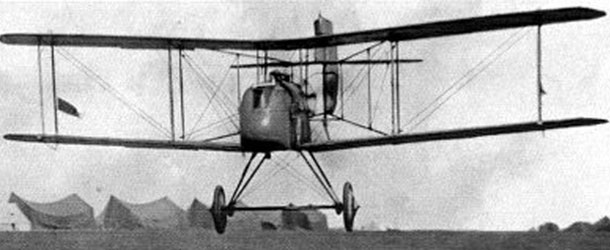
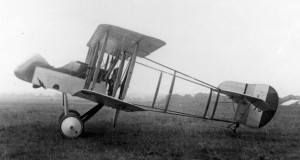
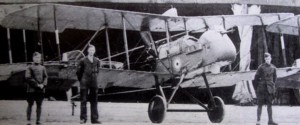
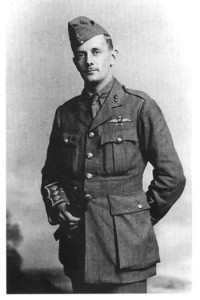

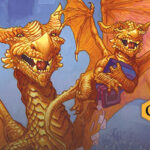





Follow Us on